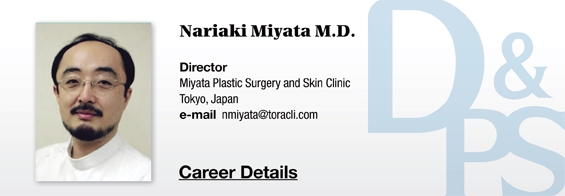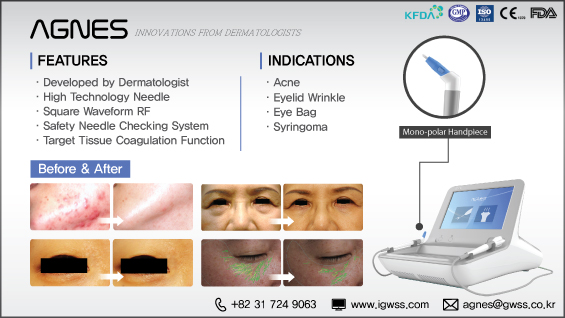
A major problem with vista shape is that inexperienced doctors are encouraged to try deep injections without being correctly informed of the risk. Following pre-defined injection sites may be less risky, however, carrying out deep injections in various sites without sufficient anatomical knowledge may cause problems. The depth of the lower dermis may be safe in some areas but if the filler material is injected into the depth of vascular passage, it could cause embolus, or vascular blockage. Reports of vision loss or skin necrosis are still rare in Japan but are sure to increase if the deep injection method becomes more wide-spread.
The risk would only increase if certain risky techniques are carried out by doctors who lack correct anatomical knowledge. Even seasoned specialists find certain injection sites problematic. Most Japanese doctors are very cautious but tend to blindly follow manufacturer manuals, especially if the treatment technique is aggressively marketed. Q-MED’s new product also was recently approved by the Ministry of Health, Labour and Welfare. I hope the manufacturer will market their product with the safety in mind.
Coming back to our main topic, the combination therapy of energy-based tightening therapies and dermal filler injections that correct facial contours offers a very practical solution as it can address both superficial and deep tissues.
It is also important to lift the shallow fat layers for effective tightening and lifting. The most successful method is thread lift, which is becoming very popular in Japan. Although it is popular, I would not go so far as saying that it is offered by most aesthetic clinicians in Japan. The absorbable suture materials are more popular than non-absorbable option such as Aptos. The new thread lift techniques are very mild and have lower risks and downtime. For these reasons, many more doctors are venturing into the thread lift procedures. It seems that the demonstration sessions and presentations by Korean specialists at international seminars are driving the popularity of thread lift in Japan.
Both cogged threads and non-cogged threads can be used for lifting treatments. Doctors disagree over which one is better but more doctors are choosing the cogged thread for better efficacy.
This is causing a problem. Cogged threads are difficult to maneuver and complications are increasing. News reports of such complications and class action law suits are damaging the reputation of the procedure. On the other hand, non-cogged threads provide a weaker pull and are unlikely to become popular again. A fashion magazine once nicknamed the non-cogged thread “shopping thread”, meaning the patient can go shopping immediately after the procedure due to no downtime, which made the thread briefly popular. However, few Japanese patients trust magazine articles. Medical specialists who write these articles are often paid by the manufacturer to say favorable things about the product. This may bring some attention to the product but it is only short-lived.
Most of the suture materials used in face lift are Korean products. The Japanese health authorities have not approved any suture materials for aesthetic treatment, therefore, no Japanese products are available yet (There are suture materials that are available for use in general surgery and plastic surgery). As the doctor’s manual skills are very important for the success of the thread lift, many training seminars are offered. Therefore, products that are recognized in these seminars are doing well in the market. This is another example of the Japanese tendency where simple techniques that can be carried out following guidelines with low risk become rapidly popular.
[Advertisement] AGNES(Radio Frequency) – Manufacturer: (www.igwss.com)
The thread lift is still not as appreciated in Japan. I often use non-cogged threads in my practice. Instead of a mediolateral lift, I prefer an upward lift for a more natural appearance (details of this technique will be covered in the future). Combining an energy-based therapy and facial injectables can further enhance the outcome.
We have talked about the use of energy-based therapies, injections, and thread lift and combinations thereof for correcting the sagging skin. I have also discussed the unique trends and preferences of the Japanese people. In the next article, we will take a closer look at treatment techniques.
-To be continued




















